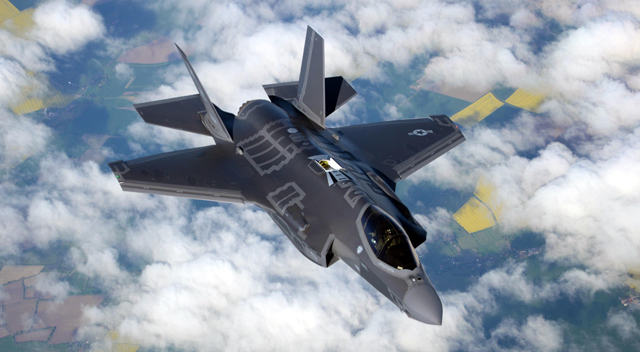The US Air Force’s 461st Flight Test Squadron recently began flight testing the Automatic Ground Collision Avoidance System (Auto GCAS) aboard the Lockheed Martin F-35 Lightning II at Edwards Air Force Base in California.
Auto GCAS uses sensors on a fighter aircraft, terrain data and other on-board monitors to look out for a likely ground collision. Based on the aircraft’s trajectory, speed, and lack of input from the pilot, the system then calculates the best way to recover to a safe trajectory, automatically overrides the flight controls and flies the aircraft away from danger. Ground collision is often the result of pilot disorientation, from a scenario such as target-fixation, or gravity-induced loss of consciousness.

USAF F-35A
USAF
The technology has been integrated into the Lockheed Martin F-16 and the Lockheed Martin F-22 already, and has been credited with saving the lives of a number of pilots. The system, which was developed by Lockheed Martin, was previously tested at Edwards AFB, hence the use of the base for current testing.
The USAF envisions not only using the automated flying ability of Auto GCAS for avoiding collisions with the ground but also to make the F-35 a more capable aircraft in dogfights, says Lt Col Raven LeClair, a test pilot with the 461st Flight Test Squadron.
“This technology is the stepping stone to increased combat capability via a fully capable combat autopilot that will be able to execute tactical manoeuvres to defeat inbound kinetic and non-kinetic threats, and maximise lethality through precise weapon employment,” says LeClair. “The future F-35 pilot is going to be a lethal battlefield manager with automated tools at his fingertips to ensure survivability and lethality.”
Source: FlightGlobal.com



















